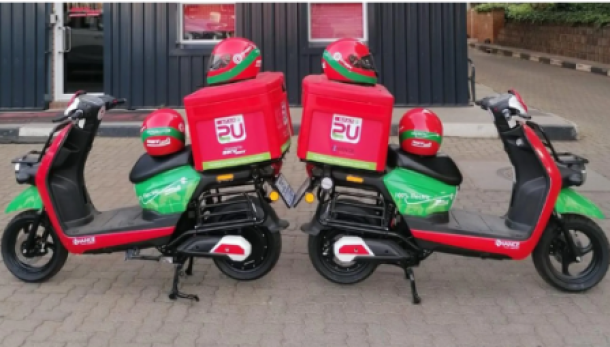Retailers use creative spaces to earn extra
Typical revenue streams for retailers include rental from tenants, parking and turnover clauses. But, with alternate or non-GLA (Gross Lettable Area) spaces fast becoming hot property among blue-chip brands looking for fresh ways to entertain and engage consumers, additional income opportunities that generate millions are quite literally staring property developers and mall management in the face.
David McKenzie, MD of Cape based BOO! Surprising Media Solutions says, “Out of home (OOH) campaigns that integrate existing structures like a wall or glass facades, escalators, construction sites, LED screens, and even Wi-Fi into their creative, are exploding locally and abroad. And brands are willing to pay a premium for this ‘new’ space.”
According to McKenzie it’s not uncommon for a property to generate between R2m and R3m per annum by using its unused space for brand campaigns. “Once we’ve conducted a full audit of the property, we propose a host of media opportunities. On agreement from the landlord, they are then confirmed as permanent media sites with pre-set value and rates.”
Given the strong upsurge in mall development around the country, which sees South Africa’s 2,000 shopping centres and 23 million m² place it sixth in the world with respect to number of malls after the United States, Japan, China and the United Kingdom*, this is more and more likely to become the norm.
“Alternative revenue streams from creative campaigns are becoming budget line items on property developers’ financial forecasts and dedicated commercial directors are being appointed to optimise their site’s interactive advertising potential,” says McKenzie.
Capitalising on the opportunity is the V&A Waterfront, Sandton City, South Point and Melrose Arch. amongst others. Each has signed a five-year deal with BOO! that will see it transform areas of these properties into dynamic content platforms. “At Melrose Arch for instance, we will work alongside its existing team of interior designers and architects to put spaces to work without negatively impacting the property’s flow and customer experience in any way,” says McKenzie.
“In fact”, he continues, “alternative media campaigns can add significant value to a site – besides the financial benefit.” Done well, they can enhance it by adding atmosphere and design appeal. This in turn influences customers who may dwell longer at a nearby café or restaurant while they soak up the ambiance, while the advertising will often prompt the shopper to purchase. “If the experience includes alternative ambient campaigns, one of our specialities, it may even attract spectators within the mall.”
In South Africa, alternative media opportunities are becoming highly sought after by big brands such as FNB, Standard Bank, Smirnoff and Microsoft. “Shoppers expect a brand experience within a mall.
Alternative media needs to complement this experience with the end goal being to influence purchasing decisions. Many brands have been communicating the same message through traditional media (radio, magazines, TV) and the ads in the mall or property environment close the loop in the communication process, while acting as additional revenue streams for the landlords,” concludes McKenzie.
News Category
- International retailers
- On the move
- Awards and achievements
- Legislation
- Wine and liquor
- Africa
- Going green
- Supplier news
- Research tools
- Retailer trading results
- Supply chain
- Innovation and technology
- Economic factors
- Crime and security
- Store Openings
- Marketing and Promotions
- Social Responsibility
- Brand Press Office
Related Articles

Two local businesses see a gap as food and groc...

SARS launches WhatsApp channel to help check ta...

Shoprite launches online shopping and bulk deli...

Sixty60 promises lightning-fast delivery of 10 ...


